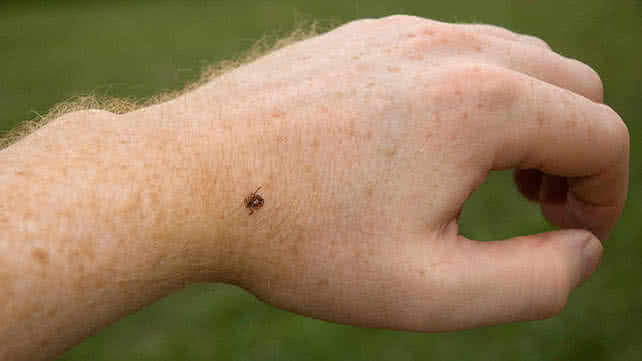Tic is uncontrolled sounds or body movements. Tics are fast, repetitive muscle movements which result in sudden and difficult to control body jolts or sounds. They are very common in the childhood and typically they first appear at around 5 years of age [1]. There are very occasional cases when tics start in the adulthood. They are usually not serious. Normally, they improve over time. Tics can be frustrating and they can interfere you with your daily activities.
How long tic last?
In the most cases, tics will improve significantly over time or they stop completely. There are many cases when tics can last just a few moths but often they tend to come and go overall several years. Tics tend to be at their most severe from around 8 years of age until the teenage years and usually start to improve after puberty. There are many studies in which scientists have said that one in three people will have more severe tics as an adult. Also in this study is said that one in three people will only have mild tics as an adult and one in three to four people will not have any tics by the time they are an adult. [2]
Types of tic
There are many different types of tics. There are some people can have some type of tics while other people can have other types of tic. Some of them affect body movement (these tics are known as motor tic) while others result in a sound (these tics are known as phonic or vocal tic). Here are some examples of tics:
- Repeating a sound or phrase – in a small number of cases, this may be something obscene or offensive
- Coughing, grunting or sniffing
- Touching other people or things
- Clicking the fingers
- Jerking or banging the head
- Blinking, wrinkling the nose or grimacing
- Here are the most common types of tics:
Movement tic: Motor tic are tics which result in body movements. Here are common examples of movements tics:
- Obscene gestures or movements
- Touching other people or things
- Shrugging the shoulders
- Snapping the fingers
- Squatting, hopping or bending over to touch the floor
- Twisting the neck
- Jerking or banging the head
- Biting the lip or moving the tongue (such as sticking the tongue out)
- Wrinkling the nose or grimacing
- Blinking or twitching the eyes
In some cases tics are appearing that they are similar to the normal movements but tics cannot be controlled. Some people are able to delay a tic for a short time but eventually the urge to do it becomes too strong.
Sound tic: Sound tic are known as phonic tics or vocal tics. Common examples of sound tics [3] are

- Using obscene or offensive words and phrases (this is uncommon type of sound tic)
- Repeating a sound, word or phrase
- Squeaking
- Clearing the throat
- Sniffing
- Hissing
- Snorting
- Animal noises, such as barking
- Grunting
- Coughing
Sometimes the normal flow of speech may be interrupted or the tic may occur at the beginning of a sentence in a similar way to a stammer.
Tics can happen randomly and they can associated with something such as happiness, excitement, tiredness, anxiety or stress [4]. Tics tend to get worse if they are talked about or focused on. Tics often start with an unpleasant sensation which builds up in the body until it is relieved by the tic (which is known as an urge) although they can sometimes be partly suppressed. Tics do not always need to be treated if they are mild but treatments are available if they are severe or are interesting with everyday life. Many tics will improve or go away significantly after a few years. But if you have severe tic and if you let them untreated, then it can cause you problems in your social life or at the school. [5]
References:
[1] Kim S, Greene DJ, Bihun EC, et al. Provisional tic disorder is not so transient. Scientific Reports. 2019;9.
[2] Robakis D. How much do we know about adult-onset primary tics? Prevalence, epidemiology, and clinical features. Tremor and Other Hyperkinetic Movements. 2017;7:441.
[3] University of Nottingham. Stimulating research gives new treatment hope for Tourette Syndrome. Science Daily. 2020. Retrieved from sciencedaily.com/releases/2020/06/200604152106
[4] Tilling F, Cavanna AE. Relaxation therapy as a treatment for tics in patients with Tourette syndrome: a systematic literature review. Neurological Sciences. 2020;41:1011–7.
[5] Nosratmirshekarlou E, Shafiq S, Goodarzi ZS, et al. Effect of diet, exercise and sleep on tic severity: a scoping review protocol. BMJ Open. 2019;9(7):e024653.




